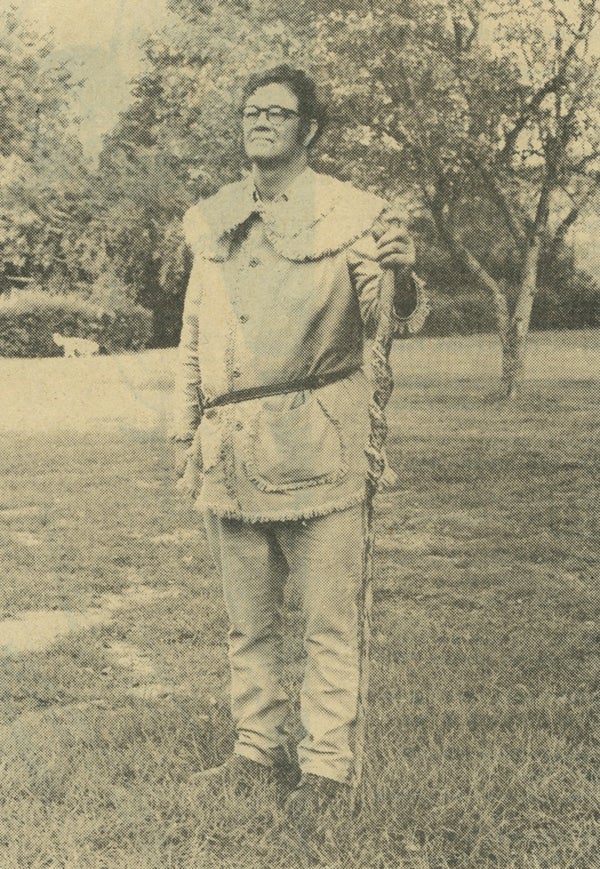Battle of Kings Mountain: Overcoming Mountainous Odds
Published 1:56 pm Thursday, September 16, 2021
|
Getting your Trinity Audio player ready...
|
By ROZELLA HARDIN
Editorial Director
rozella.hardin@elizabethton.com
The trail leading up to the turning point of the American Revolution was long and hard, and runs from Abingdon, Va., to Kings Mountain, N.C.
Each year along the 330-mile Overmountain Victory Trail, state and federally run parks and historic sites celebrate the heroism and endurance of the backcountry pioneers who fought a momentous military campaign that ultimately proved of monumental significance in the outcome of America’s War of Independence.
One of the men who fought long and hard to have the Overmountain Victory Trail designated a national historic trail was the late Thomas Gray of Elizabethton.
It all began in 1975 when a local group of dedicated people led by Gray and inspired by the late Judge Ben Allen staged the first re-enactment of the 1780 Overmountain March. Their goal was to gain national recognition for the OVT by 1980 — the 200th anniversary of the famous march, and from there the march became an annual event.
In 1978 the Congress authorized a feasibility study of the trail and its importance to history, after which a positive recommendation was sent to Congress and in 1980 legislation was passed making the OVT a national trail, and it was signed into law by the president.
In addition to Gray, among local hikers on that first re-enactment march were David Yates, the youngest boy participating in the march, and Charles LaPorte and Mark and Kazel LaPorte.
In the years to follow Jack Stansberry along with Sycamore Shoals Park directors, Herb Roberts and Jennifer Bauer, have been actively involved in the annual march and celebration.
THE TRAIL STORY
It all began on the afternoon of Sept. 23, 1780, when some 400 pioneer farmers, hunters, and woodsmen gathered at Dunn’s Meadow near what today is Abingdon, Va.
The Virginians were responding to calls of assistance from neighbors in North Carolina and in the Watauga River Valley. The neighbors had been harassing a wing of Gen. Charles Lord Cornwallis’ British Army, and had been told by the detachment leader, Major Patrick Ferguson, if they did not desist, he would “hang their leaders and lay their country waste with fire and sword.”
Instead of waiting for Ferguson to come to them, the mountaineers decided to reverse the roles and sent out a call for volunteers.
The Virginians marched southward to Sycamore Shoals on the Watauga to join some 500 Overmountain Men from Tennessee. Crossing the rugged Blue Ridge Mountains, the contingent pressed southward, its numbers swelling with the arrival of more volunteers from North Carolina, South Carolina, and Georgia.
They overtook Ferguson and his men at Kings Mountain, S.C., on the afternoon of Oct. 7, 1780. In the fierce fight that followed, the entire British force was killed, wounded, or captured. The Patriots lost 28 in their company with 62 wounded.
Among the dead was Ferguson, who had been hit seven times with bullets from the deadly long rifles used by the Overmountain Men.
The victory by the Overmountain Men not only submerged Loyalist support for the British in the Carolinas, it severely weakened Cornwallis’ army. Subsequent battles at Cowpens in South Carolina and Guilford Courthouse in North Carolina further reduced British numbers and sympathy and led to Cornwallis’ surrendering at Yorktown in October 1781.
Most historians are convinced that what happened at Kings Mountain two centuries ago marked the turning point of the American Revolution and played a major role in making independence a reality.
This year marks the 241st anniversary of the establishment of the Overmountain Victory National Historic Trail.
The purpose of preserving the route was to recognize and raise awareness about the importance and difficulty of the military feat that independent Southern Appalachian militias performed for the cause of winning American independence.
Today, nearly all the land that the trail followed is observable via the Overmountain Commemorative Motor Route, which “passes through mostly rural countryside” and typically every year “the march reenactment proceeds both on foot and in cars, allowing those not wishing to walk to join.”
More than 90 miles of the Overmountain Victory Trail is walkable now, and the park service’s ultimate goal is to eventually acquire easements so that the entire route is open to hiking.
HIDDEN HISTORY
As dramatic and exhilarating as is the tale of the Overmountain militia’s arduous journey and the Battle of Kings Mountain — and despite the recognition by Congress and efforts to raise awareness about their feats of daring and endurance — it doesn’t get nearly the attention it deserves.
In fact, most people outside the region where the events transpired probably haven’t even heard of it.
“It is absolutely the most untold story of the American Revolution,” said Steve Ricker, director of interpretive programming for the Overmountain Victory Trail Association, a group that works with the National Park Service to develop educational outreach programming and organize commemorative activities.
“What people don’t realize is that there were more Revolutionary War battles fought in the American South than anywhere else,” Ricker said. “When the British decided to move South, it was a big mistake. They fought Washington up north for five years, but in the South they got whipped in just a year and 12 days.”
One of the reasons that the march of the Overmountain Men and the Battle of Kings Mountain perhaps hasn’t gotten as much play in the history books and the teaching of America’s founding is that it was in effect this country’s first “civil war”; most of the participants on both sides were American born.
“Patrick Ferguson had a few regulars with him, but it was mostly a loyalist army,” said Ricker. “It was actually Americans fighting Americans.”
Another reason this is the most untold story is simply because it wasn’t the Continental Army that defeated the British in the South — it was mostly backwoodsmen, said Ricker.





